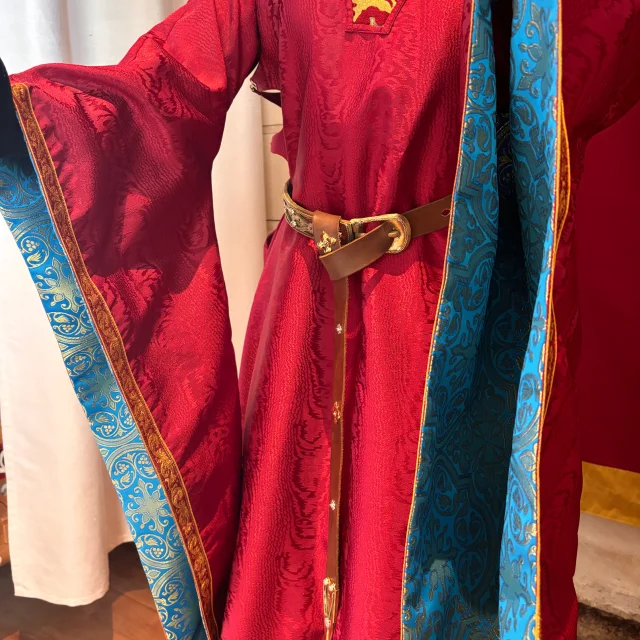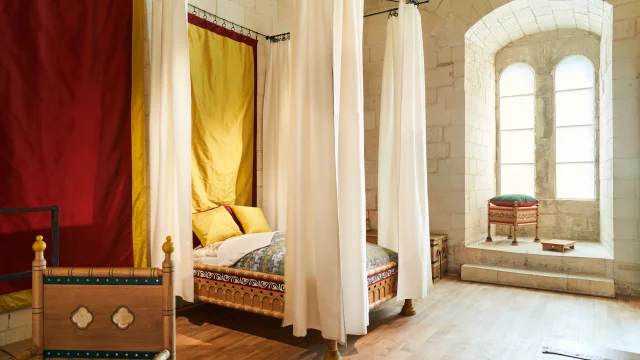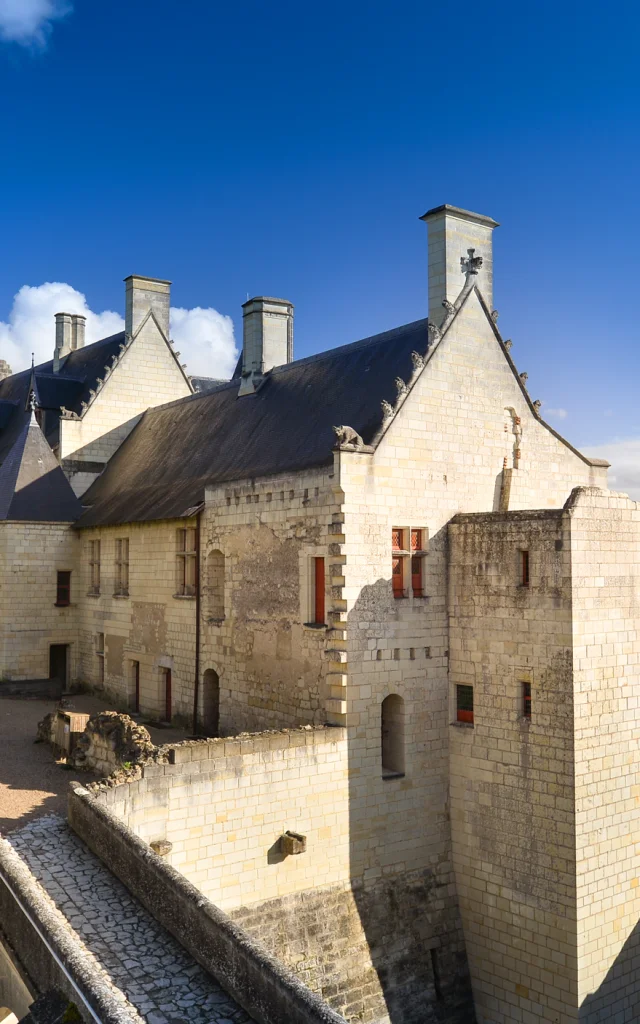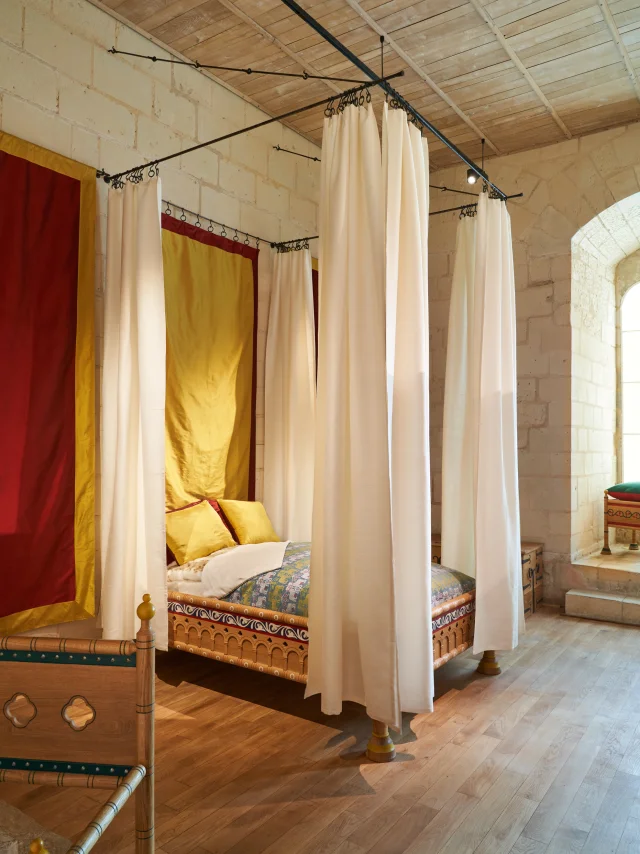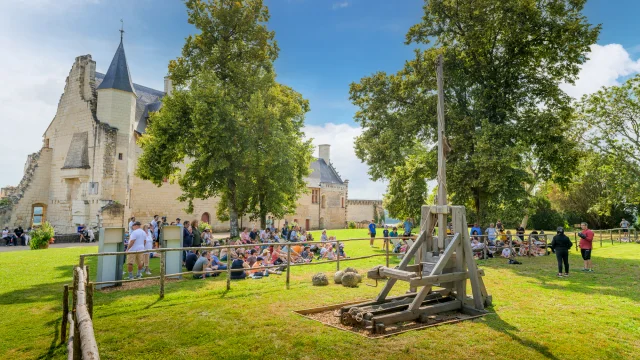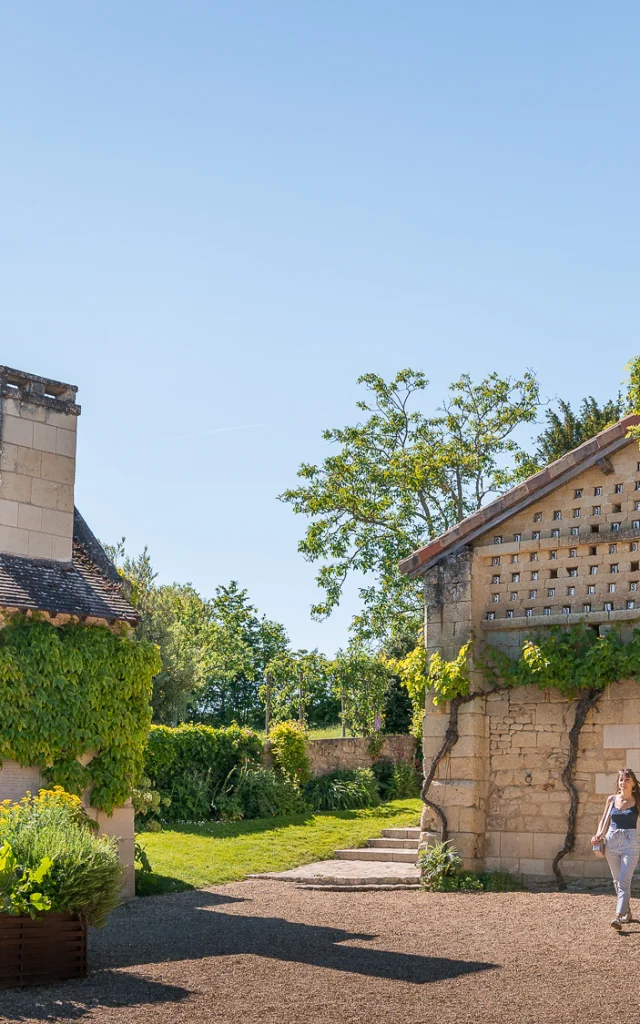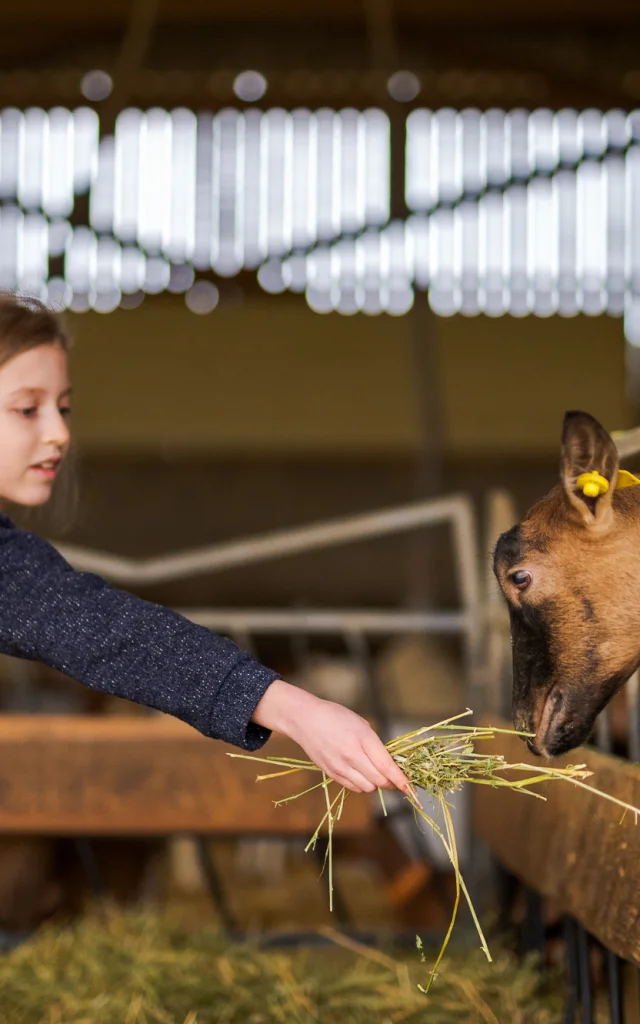Eleanor of Aquitainea legendary sovereign at the heart of the fortress of Chinon
Discover the fascinating story of Eleanor of Aquitaine in the majestic setting of the royal fortress of Chinon. Immerse yourself in the world of a legendary queen through her reconstructed bedroom, for a gripping immersion in the heart of the Middle Ages.
A queen with an exceptional destiny
From Duchess of Aquitaine to Queen of France
On 25 July 1137, the young Eleanor became Duchess of Aquitaine at just fifteen years of age. An exceptional destiny opened up for this heiress to the largest territory in the kingdom of France. In Bordeaux, in St Peter’s Cathedral, she married the future Louis VII. A few weeks later, the couple were crowned in Bourges: Eleanor became Queen of France. At court, the young sovereign brought the refinement of her Aquitanian culture. Passionate about the arts and the poetry of the troubadours, she breathed new life into a kingdom with more austere customs. Her growing influence with the king did not fail to arouse jealousy among the royal advisors.
 Chinon Espace Plantagenet
Chinon Espace Plantagenet

